Authentic Japanese ramen places
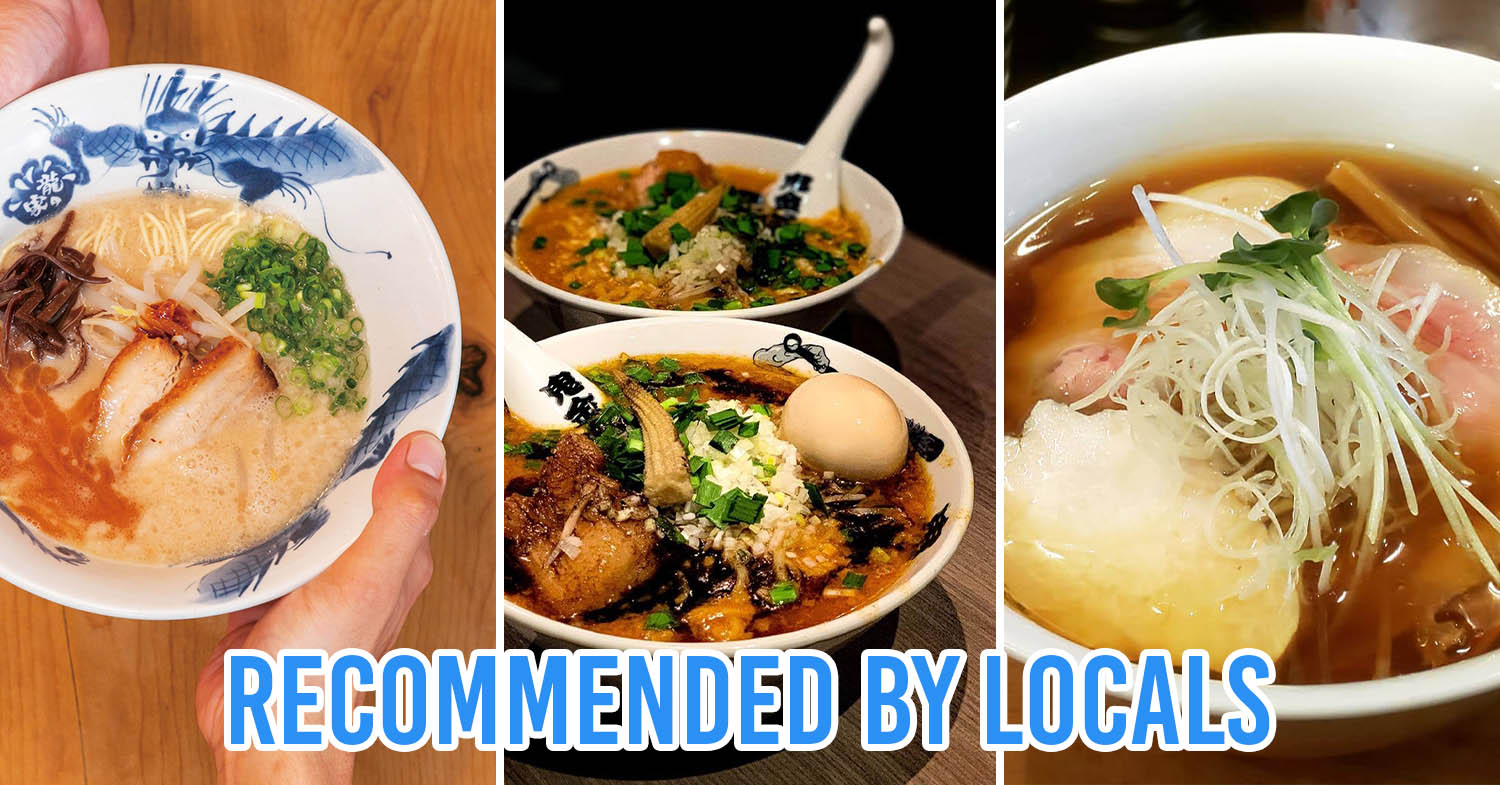
Image adapted from: ラーメン 龍の家(Tatsunoya), @holhomei and @hidekazuseto
Ask your friends for authentic Japanese ramen recommendations and they’ll probably mention Ichiran Ramen. Indeed, Ichiran Ramen is synonymous with a good bowl of ramen. The brand has come a long way from its roots in Hakata, and has since expanded all across Asia and even to the US.
But we know you’re not about that mainstream life, which is why we’ve compiled a list of authentic Japanese ramen places that are yet to be discovered by tourists. Just keep these places a secret between us, okay?
1. Chuka Soba Tomita (中華蕎麦 とみ田)
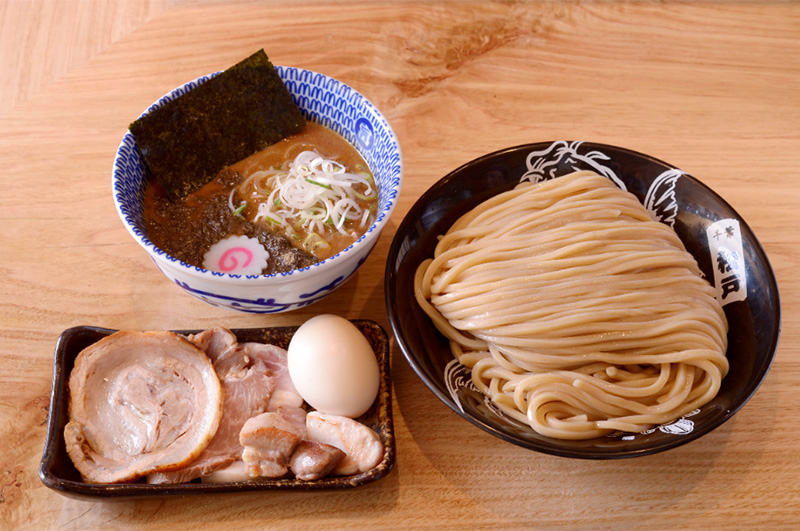
Image credits: Tomita Ramen
Tomita Ramen is rated the best tsukemen and the #1 ramen by Ramen Database, a site that lists and ranks ramen shops in Japan, with a top score of 99.75. Besides winning multiple awards, there’s also a documentary, called Ramen Heads, about the shop.
Its tsukemen is made of dense homemade buckwheat noodles, paired with a bowl of thick and rich soup – like a deconstructed ramen bowl. The broth is a complex and umami-full harmony of pork bone and seafood, with the zing of yuzu for balance.
Try the tsukesoba (¥1,100), Tomita Ramen’s version of tsukemen dipping noodles. It’s paired with perfectly-grilled chashu that melts in your mouth. End the meal by requesting for the thick soup to be turned into broth by adding hot water.
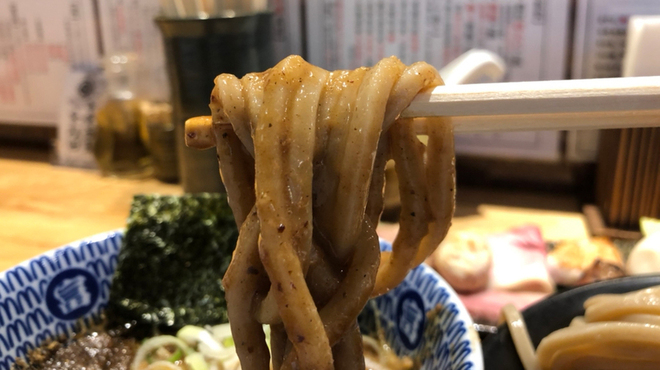
Image credits: Tabelog
The main branch, Chuka Soba Tomita, is in Matsudo, Chiba Prefecture, an hour away from Tokyo. Hardcore ramen fans queue from 7AM in hopes of getting a ticket to enter the shop since only 6 customers are allowed inside at a time.
For travellers on a tight schedule, there are branches in KITTE, just beside Tokyo Station, and Narita Airport. Although these branches are not helmed by Tomita himself, his apprentices do a great job at maintaining the high standard of ramen bowls dished out.
Estimated Price: ~¥1,000-¥1,999/pax
Address: Chiba: Japan, 〒271-0092 Chiba, Matsudo, 1339 高橋ビル | Narita Airport: Japan, 〒286-0121 Chiba, Narita, Komaino, 2159 第 一 ターミナル 中央 ビル 4 階 成田空港官庁合同庁舎 | Tokyo Station: Japan, 〒100-0005 Tokyo, Chiyoda City, Marunouchi, 2 Chome−7−2 KITTE丸の内 KITTE GRANCHE
Operating Hours: Chiba: 11AM-3PM, Daily, closed on Wed | Narita Airport: 8AM-8.30PM, Daily | Tokyo Station: Mon – Fri 11AM-10PM, Sat – Sun 11AM-9PM
Telephone: Chiba: 47-368-8860 | Narita Airport: 476-32-8673 | Tokyo Station: 03-6259-1133
2. Homemade Ramen Muginae (麦苗)
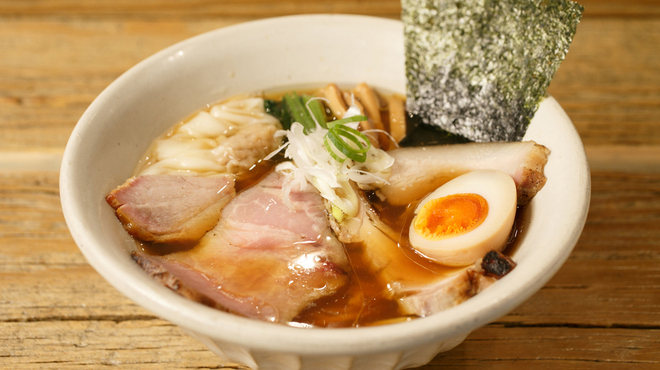
Image credits: Tabelog
Located in Omori, people often queue 1.5 hours for a taste of the ramen at Homemade Ramen Muginae. This is despite the 20 minutes train ride from Shinagawa, and that there isn’t much to do there. The crowd is made of tourists and locals alike, especially since it was awarded a bronze medal by the stringent Japanese food review site, Tabelog.
Similar to many popular ramen stalls, Homemade Ramen Muginae has a ‘time schedule’ queueing system. Many begin queueing at 9AM. At 10.20AM, the staff will give out tickets indicating when to return, from 10.45AM onwards. When you return at the designated time, you’ll have to wait in line again with people in similar time slots. While the queue may be a turn-off, patrons believe that it’s worth the wait for one of the best ramen in Japan.
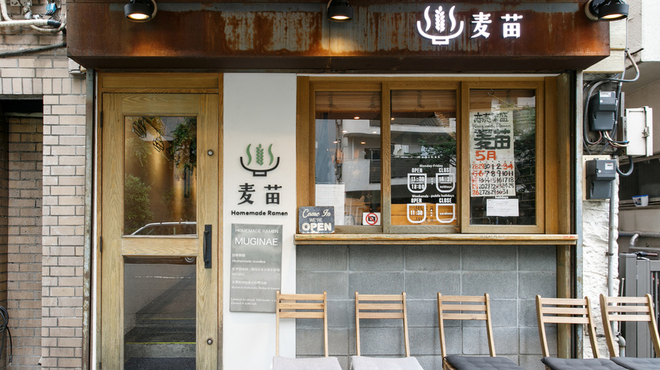
Image credits: Tabelog
There are two main types of ramen, niboshi ramen and shoyu ramen. Niboshi (¥850) is a clear and salty sardine-based soup, while the shoyu (¥850) version incorporates soy sauce into the broth for a stronger flavour.
The special versions (¥1,100) also include ajitama eggs – seasoned boiled eggs with slightly runny yolks. The chashu is highly-raved about on review sites for being the star of the bowl, as its lightly salted flavour and melt-in-your-mouth texture pairs perfectly with the ramen.
Estimated Price: ~¥1,000-¥1,999/pax
Address: 6 Chome-11-10 Minamioi, Shinagawa City, Tokyo 140-0013, Japan
Operating hours: Mon – Fri 11.30AM-2.30PM, 6PM-sold out (before 6.30PM) | Sat – Sun 11.30AM-sold out (before 2.30PM)
Before dropping by, do check their Twitter and Facebook pages for the monthly schedule as the shop isn’t open every day. The Twitter page also gives daily updates on the number of bowls left for the rest of the day so you can plan your visit accordingly.
3. Sakurai Chuka Soba-ten (櫻井中華そば店)
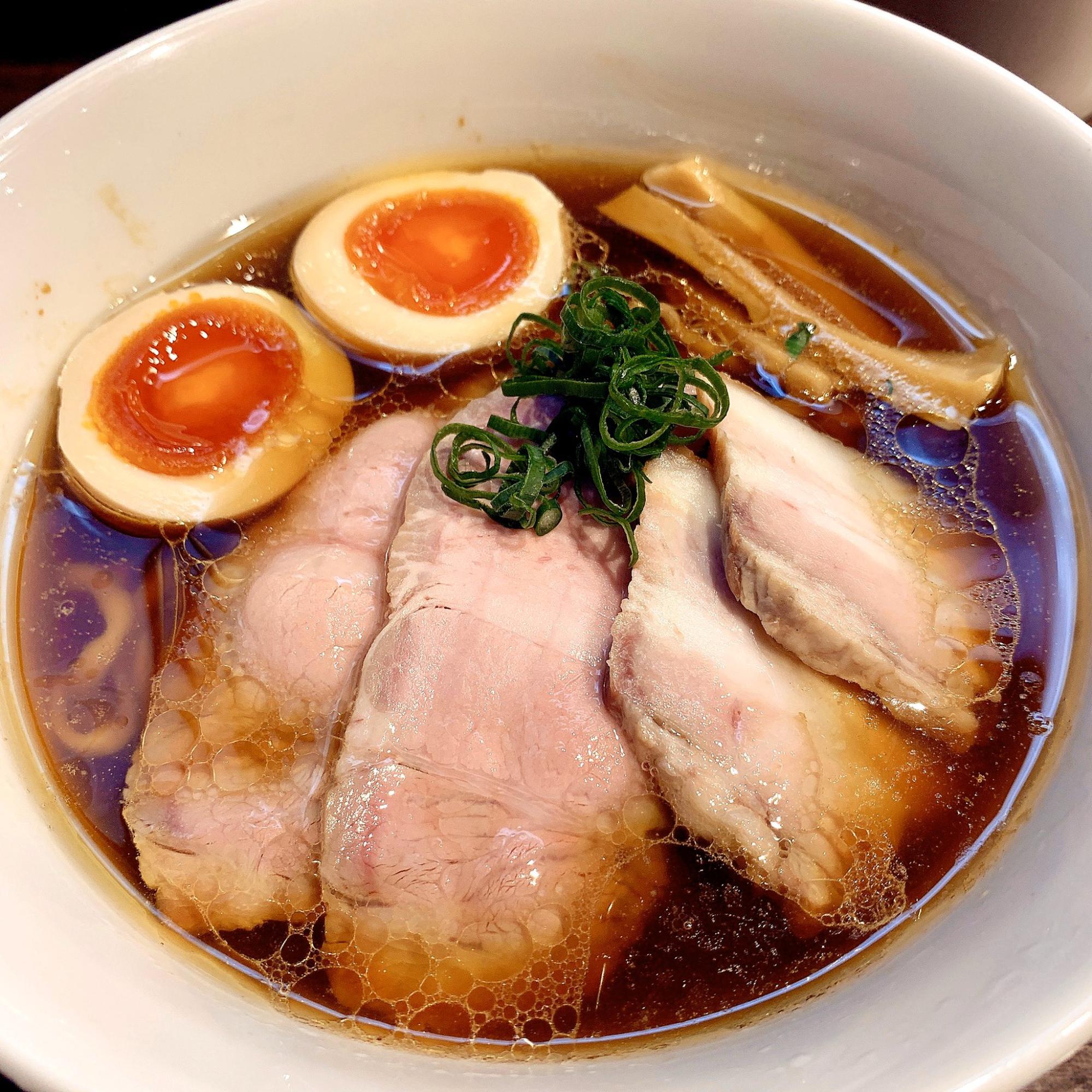
Image credits: @harapecooh29
Sakurai has been rated one of the top 100 ramen stalls in Japan by Tabelog. Using chicken stock and soy sauce for its broth, the ramen is also coated with a layer of oil from the chicken for its signature rich flavour that fans love.
While most shoyu ramen bowls are said to be one-dimensional in taste, Sakurai has been praised for bringing some sweetness to the savoury broth. We recommend ordering the ‘Special Chuka Soba with Shoyu’ (¥1,070), which comes with two halves of an ajitama egg.
Estimated Price: ~¥1,000-¥1,999/pax
Address: Japan, 〒240-0023 Kanagawa, Yokohama, Hodogaya Ward, Iwaicho, 53 稲村ビル 1F
Operating hours: 11.30AM – 2.30PM, 6PM – 9PM daily | Closed on Wed
Telephone: 45-315-2058
Check out Sakurai’s schedule and updates on ramen availability on their Twitter page.
4. Men’an Chitose (麺庵ちとせ )
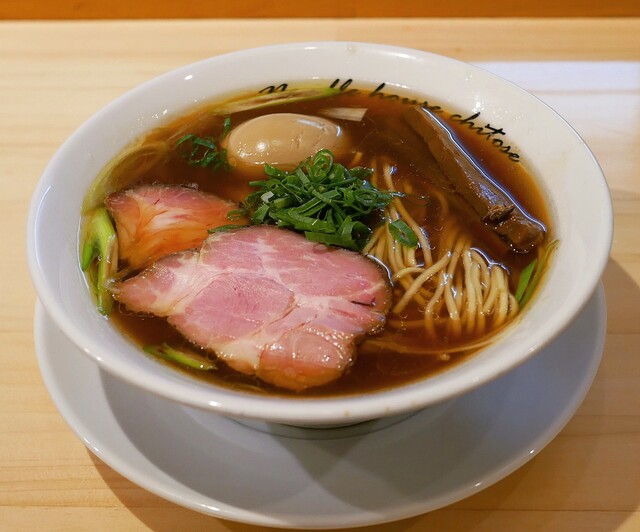
Shoyu Ramen (¥830)
Image credits: Tabelog
Men’an Chitose is a small ramen stall run by a couple, and can only seat about 10 people.
It offers a delicate broth perfect for people who want something light. The soup base is made of chicken from Hakata, rausu kombu from Hokkaido, and several types of shellfish. The result is a gentle and sweet-tasting broth with the right balance of umami. The chashu is intentionally lightly salted to not overpower the soup’s taste.
There are 3 types of ramen on its menu – shio (¥850), shoyu (¥830) and tantanmen (¥880). Tantanmen, Japan’s take on Sichuan’s dan dan mian, is worth a shot if you’re a fan of the spicy chilli oil and creamy sesame flavours of the latter. The soupless version, with its condensed sauce, is more similar to its Chinese counterpart, while the one with soup is more subtle.
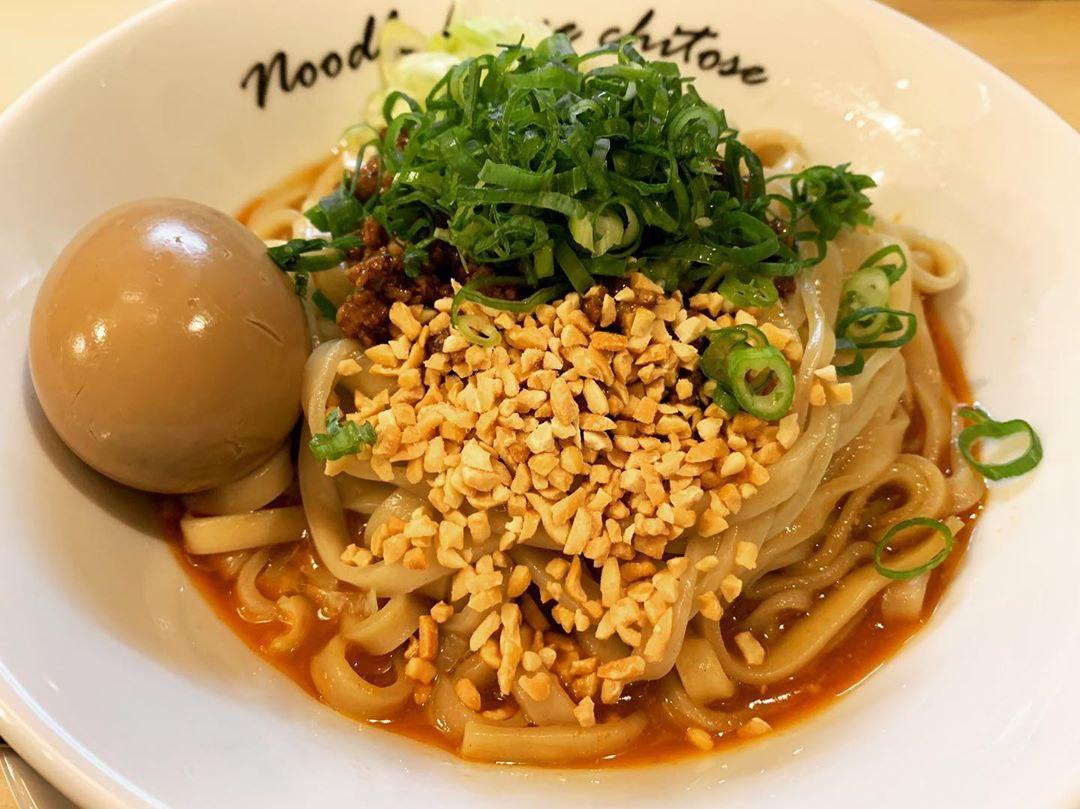
Soupless Tantanmen (¥880)
Image credits: @k16_mens
Men’an Chitose is a 7 minutes walk from Akebonobashi Station.
Estimated Price: ~¥1,000/pax
Address: 18-5 Ichigayadaimachi, 新宿区 Shinjuku City, Tokyo 162-0066, Japan
Operating hours: Fri – Tue 11.30AM-3PM
Telephone: 45-315-2058
Check their Twitter page for regular updates on opening days and availability.
5. Atariya Shokudo (あたりや食堂
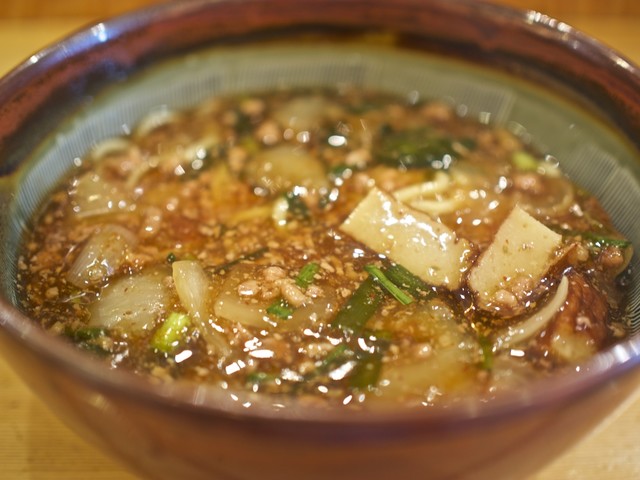
Image credits: Tabelog
Atariya Shokudo serves Kyushu-inspired bowls of ramen. It’s topped with a thick layer of anaka, a starchy sauce made with potato, chicken stock, and a sweet soy sauce from Miyazaki in Kyushu.
The star of Atariya Shokudo is the Rairaimen (¥730), which incorporates minced pork, garlic chives and onions. It also features satsuma-age, a type of fried fish cake from Kagoshima.
There are only 15 seats in the stall, 11 of which are counter seats. The owner, having spent a couple of years in the UK, is fluent in English and often strikes up conversations with customers to create an intimate and homely experience.
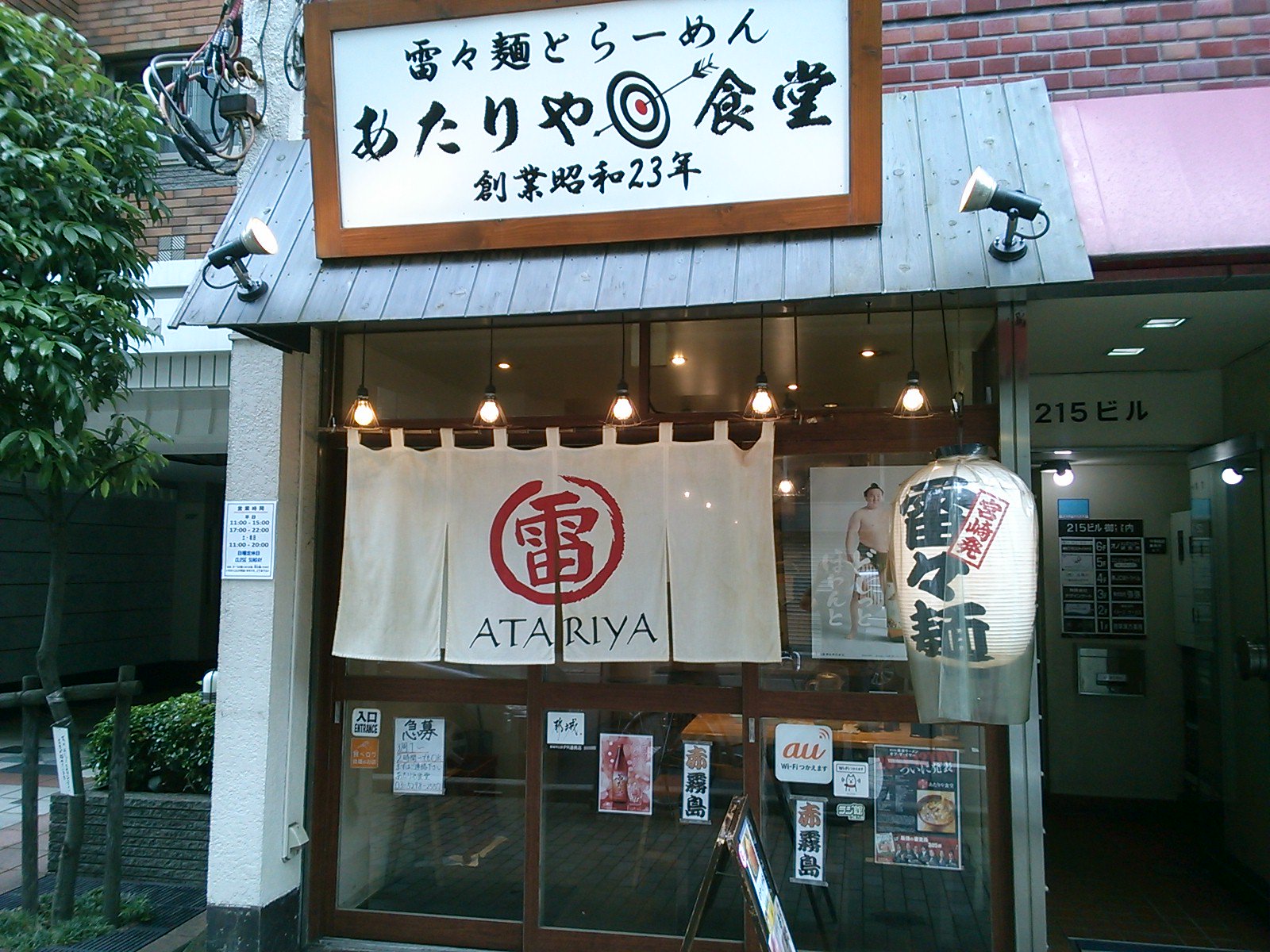
Image credits: @atariya_akiba
Estimated Price: ~¥1,000/pax
Address: Japan, 〒101-0041 Tokyo, Chiyoda City, Kanda Sudacho, 2 Chome−15-3 215ビル
Operating hours: Mon – Fri 11AM-3PM, 5PM-10PM | Sat 11AM-8PM | Closed on Sun
Telephone: 03-5298-2557
6. Chuka Soba Shibata (中華そば しば田)

Image credits: Tabelog
Chuka Soba Shibata is the highest-ranking ramen shop in Tokyo on Tabelog and features two styles of ramen – niboshi and shoyu.
The niboshi ramen (¥930) has a rather intense and fishy broth, which is a big hit amongst ramen heads in Japan. However, it is an acquired taste and can be hit-and-miss with tourists. The ajitama chashu chuka soba (¥1,080) uses chicken and duck for the broth, as well as slightly sweet soy sauce topped with a layer of oil. The result is a simple yet surprisingly refined bowl of ramen.
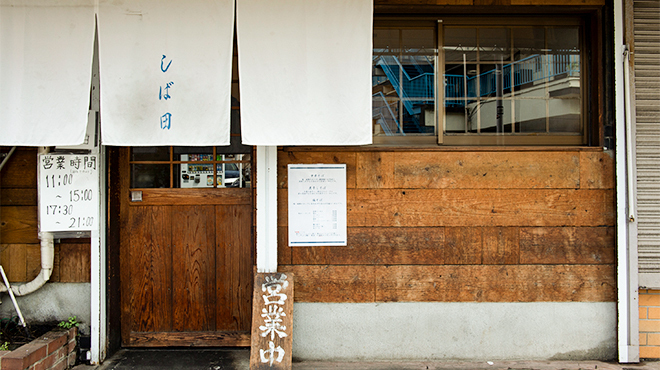
Image credits: Tabelog
Estimated Price: ~¥1,000-¥1,999/pax
Address: 2 Chome-25-20 Wakabacho, Chofu, Tokyo 182-0003, Japan
Operating hours: Mon – Sat 11AM-3PM, 5.30PM-9PM | Closed on Sun
Telephone: 080-4001-0233
7. Kamitoku (香味徳 銀座店)
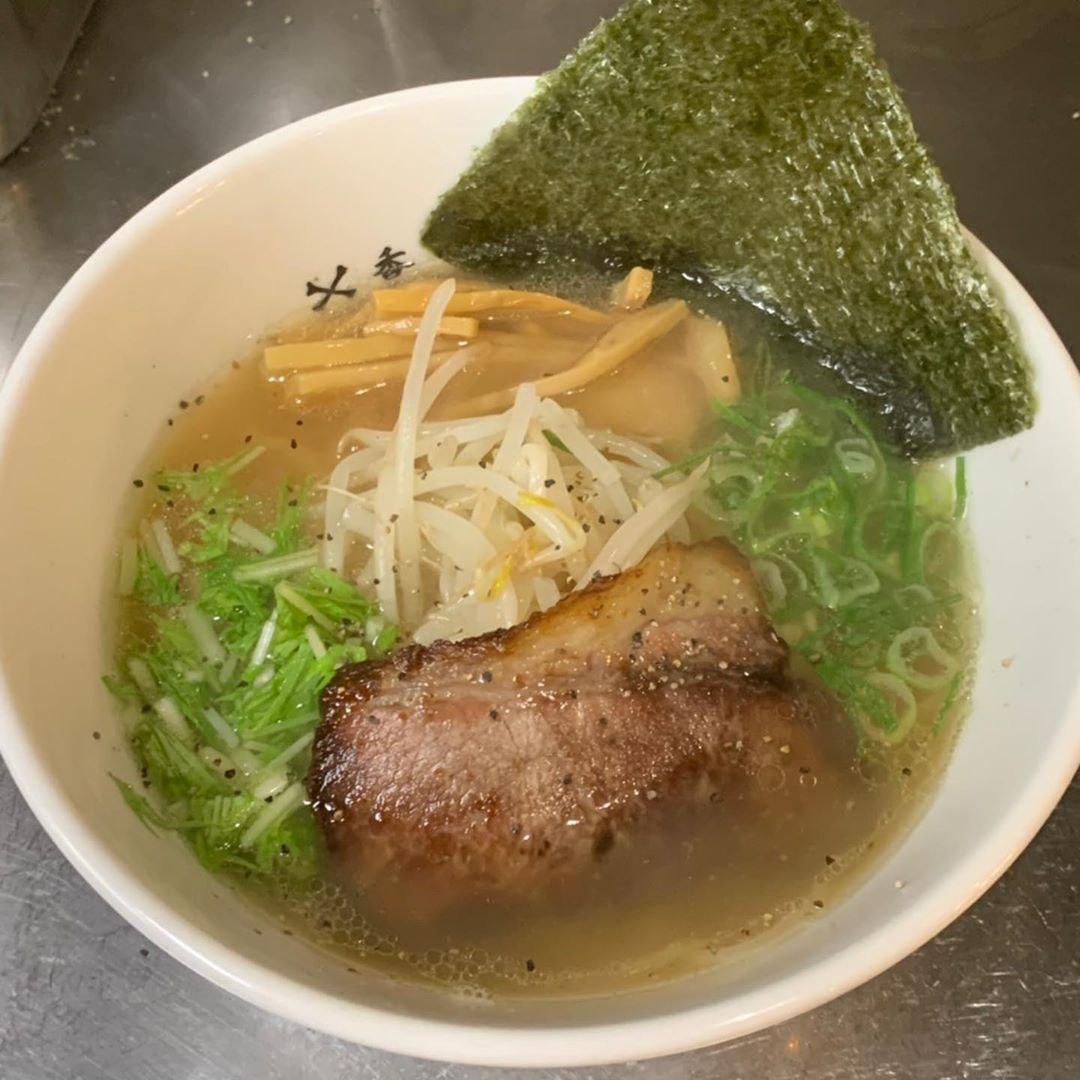
Image credits: @kamitoku_ginza
While most ramen stalls use pork or chicken bones as a base for their broth, Kamitoku has mastered the use of beef bones for stock. Kamitoku has roots as a ramen stall from a small town in Tottori Prefecture and has been operating since 1949. Today, its Ginza outlet is a favourite lunch spot for many salarymen.
The gyu-kotsu broth is a balance of umami and some sweetness, with a dash of black pepper to bring out the taste of beef. The chashu is made with grilled beef instead of the usual pork found in most places.
The most popular dish is the Kamitoku Beef Ramen (¥650), which stars a light but beefy broth reminiscent of Vietnamese pho.
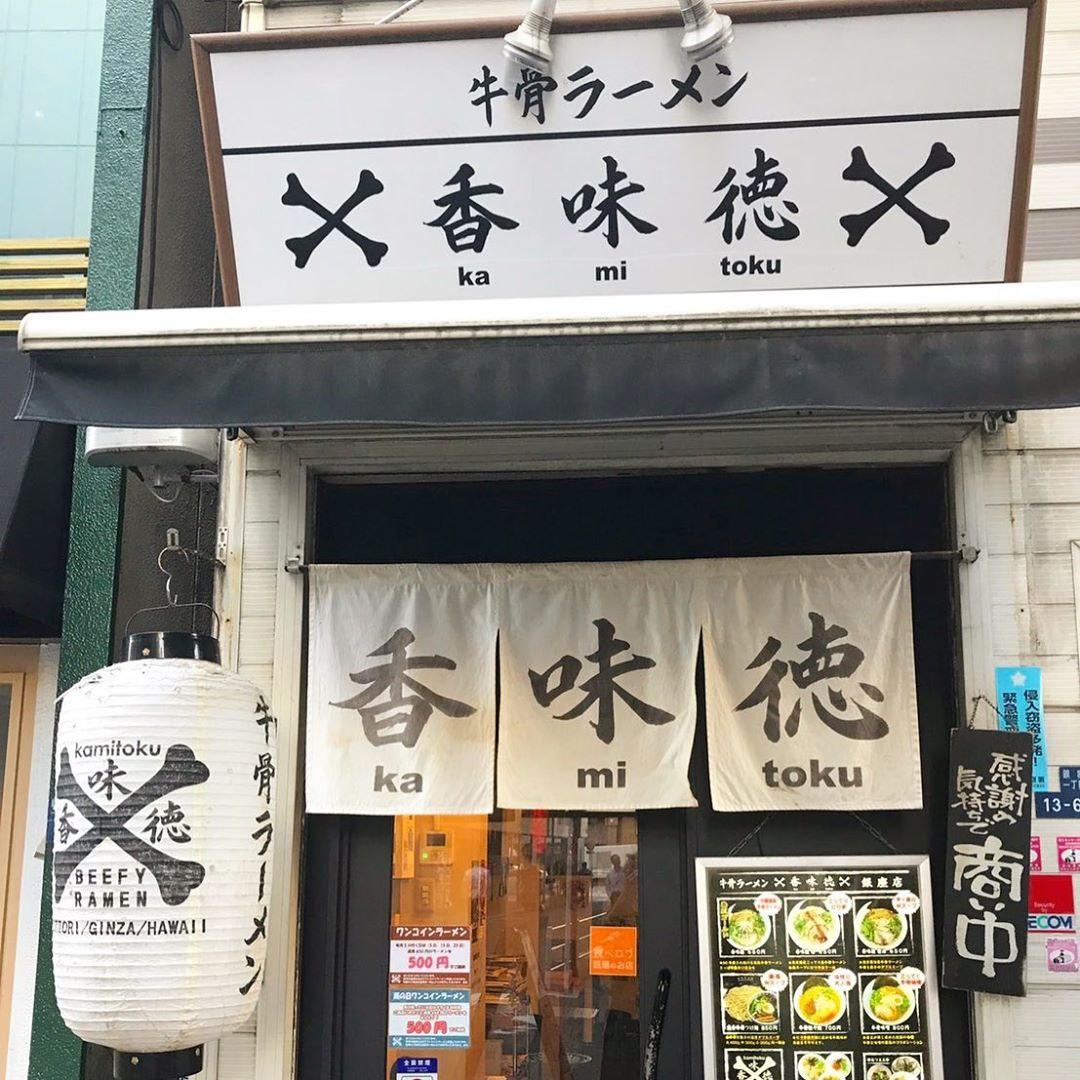
Image credits: @kamitoku_ginza
Tip: On days with the number 5 (i.e 5th, 15th, 25th) and on rainy evenings past 6PM, Kamitoku offers a ‘one-coin ramen’ deal – ramen bowls cost only ¥500.
Estimated Price: ~¥1,000/pax
Address: 1 Chome-13-6 Ginza, Chuo City, Tokyo 104-0061, Japan
Operating hours: 11AM-10.30PM, Daily
Telephone: 03-3561-5190
8. Kikanbo (鬼金棒)
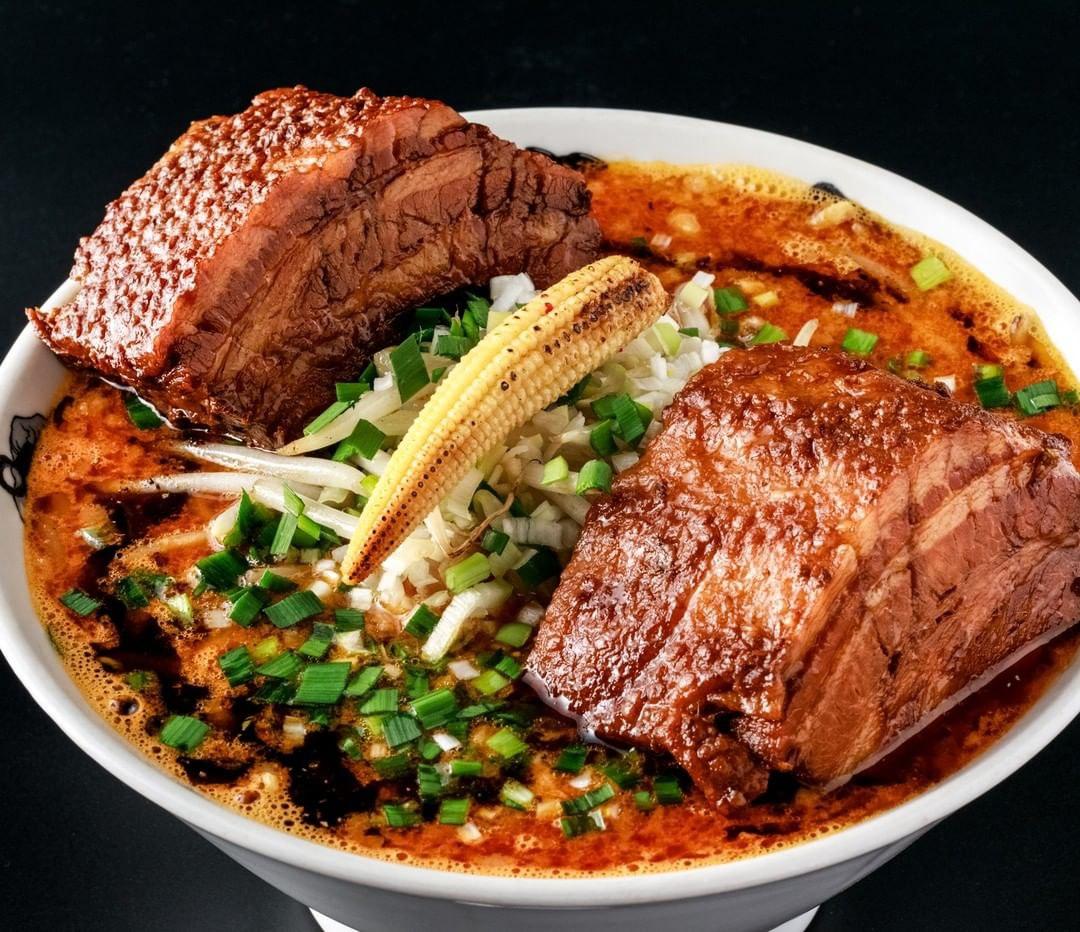
Image credits: @kikanbo_japan
Kikanbo literally means ‘ogre’s iron club’, and refers to the oni (demons) of Japanese folklore. The all-black interiors, ominous Japanese drum music and kabuki masks hanging on the walls will make you feel as if you’ve really entered an ogre’s den.
The ramen here is just as devilishly good as the decor. Kikanbo is well-known for its extremely spicy miso ramen. The broth is made with shinshu miso, chicken and pork bones, seafood and a variety of vegetables. It is then topped up with two different spice blends, kara and shibi. Kara gives the heat of chilli pepper, while shibi numbs the mouth. Together, they produce the effect Sichuan dishes are known for – mala, or ‘numbing spice’.
You can select the level of kara and shibi separately on a scale of 1 to 5, with level 1 being nuki (non-spicy) and level 5 being oni-mashi (devilish level). For lovers of spice, go for the oni level of kara for some punishment. But beware of the Sichuan pepper level – it’s known to hit unexpectedly hard.
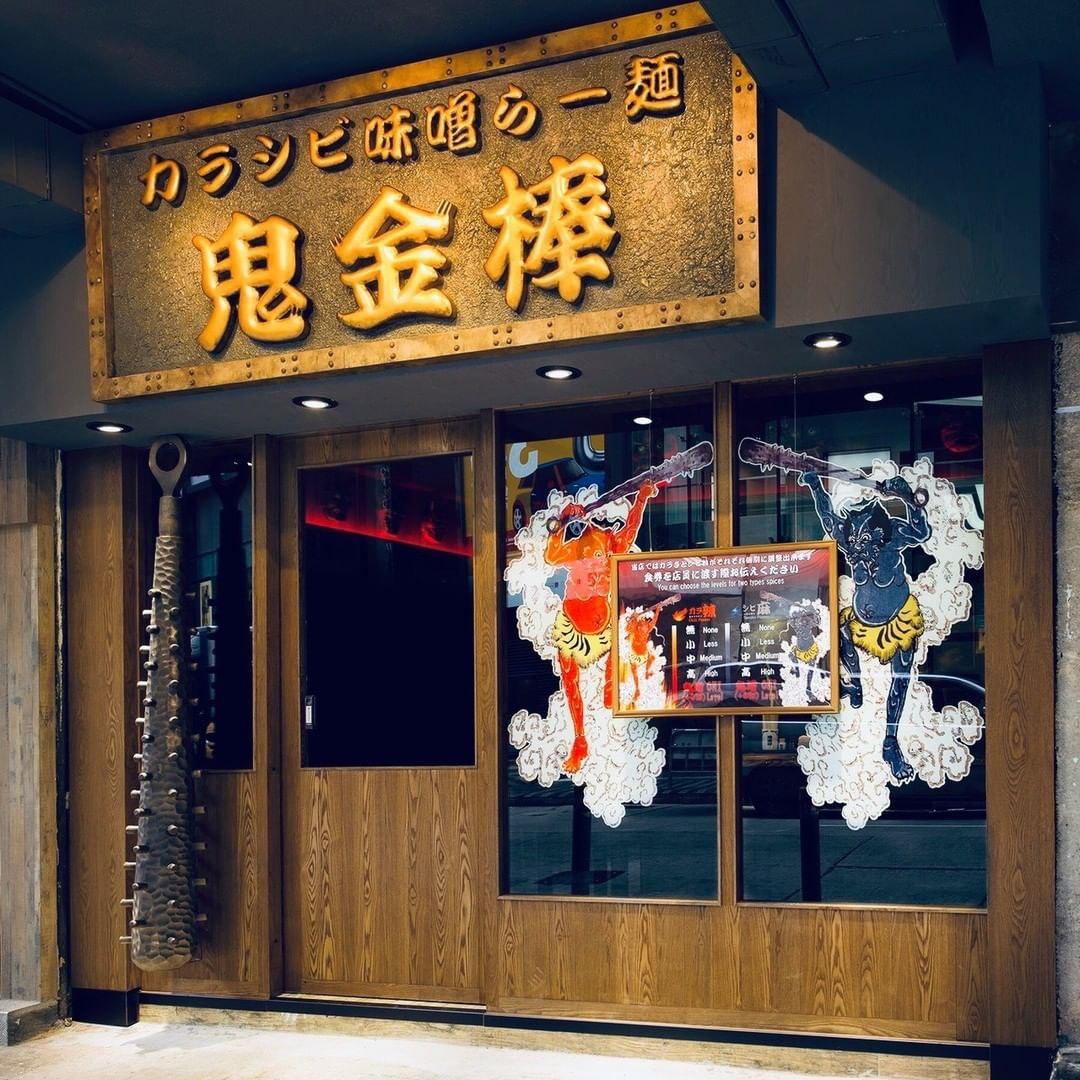
Image credits: @kikanbo_japan
We recommend ordering the Niku-Mashi Karashibi Miso Ramen (¥1,150) as it comes with a generous, tender chunk of chashu which absorbs the fragrance of the spicy broth.
There’s another Kikanbo outlet that serves the tsukemen version of these noodles just a few doors down, and the queues are typically not as long.
Estimated Price: ~¥1,000/pax
Address: 2 Chome-10-9 Kajicho, Chiyoda City, Tokyo 101-0044, Japan
Operating hours: Mon – Sat 11AM-9.30PM | Sun 11AM-4PM
Telephone: 03-6206-0239
9. Tatsunoya (ラーメン 龍の家)
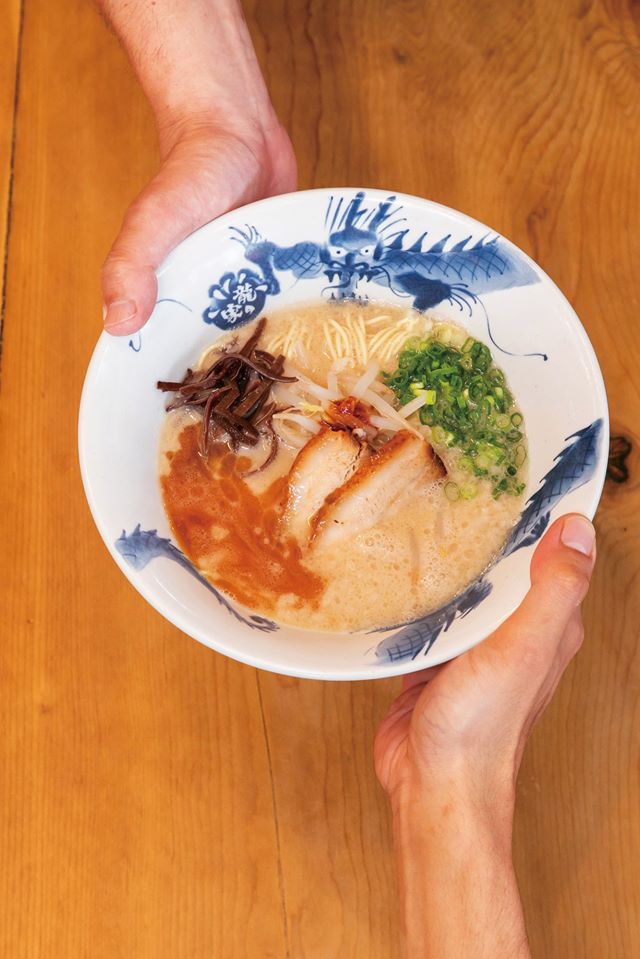
Image credits: ラーメン 龍の家(Tatsunoya)
Tatsunoya is a tonkotsu ramen specialist. Hailing from Fukuoka, the birthplace of tonkotsu ramen, Tatsunoya takes pride in its rich-yet-light broth made with nothing but pork bones and water, simmered for over 15 hours.
The tonkotsu bowls come in 3 flavours – koku, jun and spicy. Tonkotsu koku (¥850) is the signature bowl with a ‘rich’ broth, so expect more pork back fats and oil infused with garlic and onions. Tonkotsu jun (¥800) is Tatsunoya’s original, milder bowl, while the spicy tonkotsu (¥950) is blended with 3 different kinds of miso and topped up with spicy oil.
Come here if you want a simple, authentic and no-frills bowl of tonkotsu ramen.
Estimated Price: ~¥1,000/pax
Address: 7 Chome-4-5 Nishishinjuku, Shinjuku City, Tokyo 160-0023, Japan
Operating hours: 11AM-11.30PM, Daily
Telephone: 03-6304-0899
10. Menya Kaijin (麺屋海神)
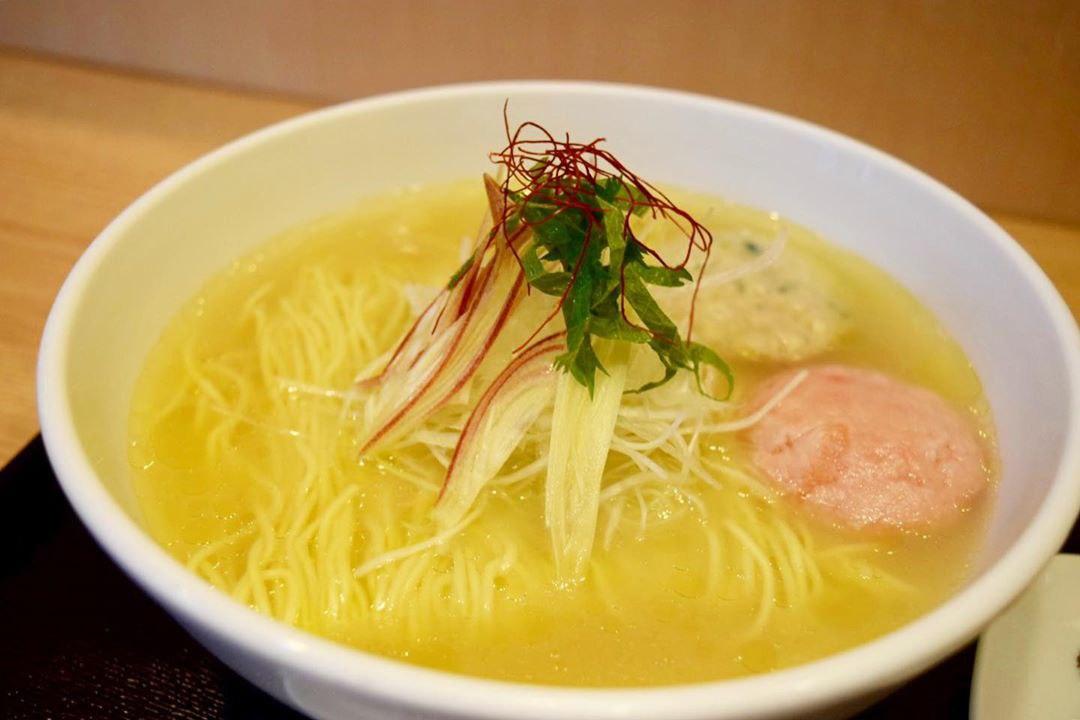
Image credits: @menya_kaijin
Menya Kaijin specialises in seafood ramen. Its broth is made with seasonal ingredients – including the fish used for broth – so the taste of the ramen changes often. The fresh seafood used is delivered daily to the store. The broth is sweet and clear, much like how a fishcake soup would taste.
We recommend getting the fish ramen with heshiko yaki rice balls (¥980). After finishing the ramen, dunk the grilled rice balls into the soup for a salty seafood porridge.
All of their ramen bowls are made from seafood and are suitable for pescetarians.
Estimated Price: ~¥1,000/pax
Address: Japan, 〒160-0022 Tokyo, Shinjuku City, Shinjuku, 3 Chome−35−7 さんらくビル2F
Operating hours: Mon – Fri 11AM-3PM, 4.30PM-11PM | Sat – Sun 11AM-3PM, 5PM-11PM
Telephone: 03-3356-5658
11. Noodle Stand Tokyo
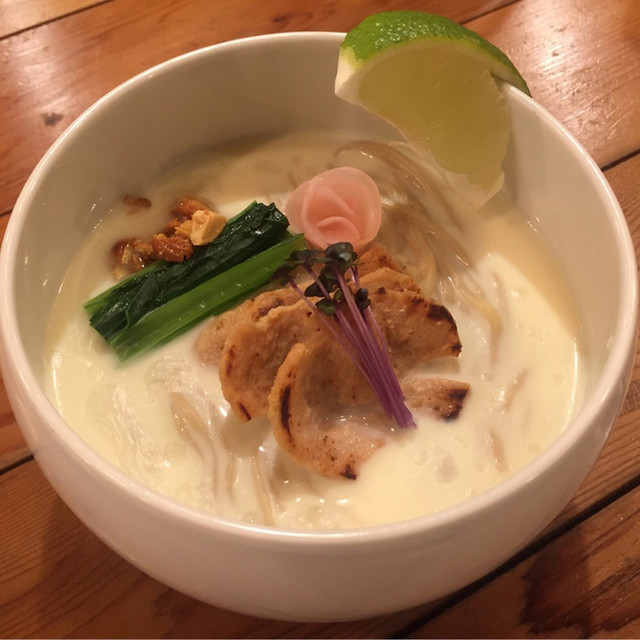
Vegan coconut ramen (¥1,120)
Image credits: Tabelog
Along with many of the stores in Harajuku and nearby Omotesando, Noodle Stand Tokyo takes pride in sourcing its ingredients locally and ethically, as well as making dishes suitable for all customers.
It features interesting options like low-carb noodles and a white miso coconut ramen (¥1,120) with vegetable toppings for vegan and vegetarian patrons. This is a change from the usual thin soy-based broth used in most vegan ramen. Alongside options for customers with dietary restrictions and allergies, Noodle Stand Tokyo also offers a traditional ramen menu made with pork and seafood.
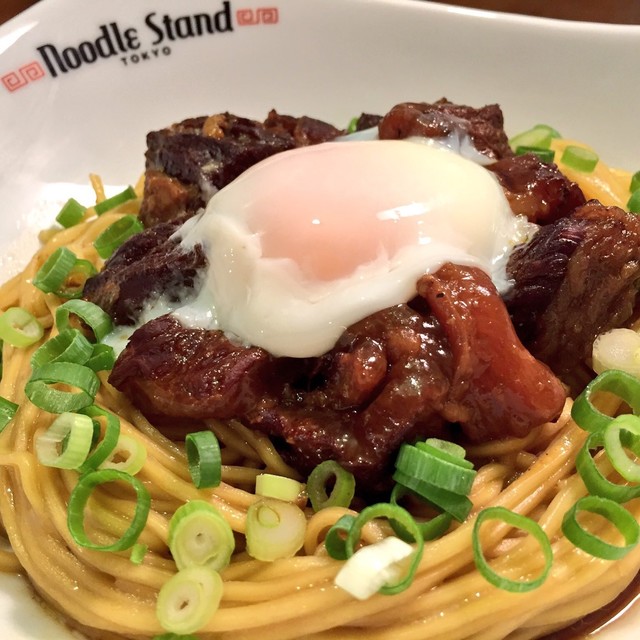
Gyu-Nikomi Mazesoba (¥970)
Image credits: Tabelog
We recommend the Kuroshio Niboshi Ramen (¥870), which uses ingredients from Chiba Prefecture. This includes the soy sauce, seafood and pork that goes into the bowl. If you’re in the mood for something beefy, order the shop’s speciality – the Gyu-Nikomi Mazesoba (¥970). It uses soy sauce, red wine, spices, and tomato for flavour and is topped with stewed beef, making it an interesting and complex dish.
Noodle Stand Tokyo was recently featured in a viral video for making a $100 bowl of ramen; you can even book the $100 ramen experience here.
Estimated Price: ~¥1,000/pax
Address: Japan, 〒150-0001 Tokyo, Shibuya City, 21, 神宮前1-21-15ナポレ原宿B1F
Operating hours: Mon – Fri 11AM-4PM, 6PM-9PM | Sat – Sun 11AM-9PM
Telephone: 03-6804-1477
Authentic Japanese ramen places
Ichiran isn’t the only well-known ramen stall in Japan that you must try – there are plenty of other stalls awaiting in the Land of Ramen. While the famous stalls serve amazing ramen, many relatively unknown ones pack a solid punch, too. Grab your chopsticks and get ready to slurp up some noodly goodness!
Want more ideas for your next trip to Japan? Check out our articles here: